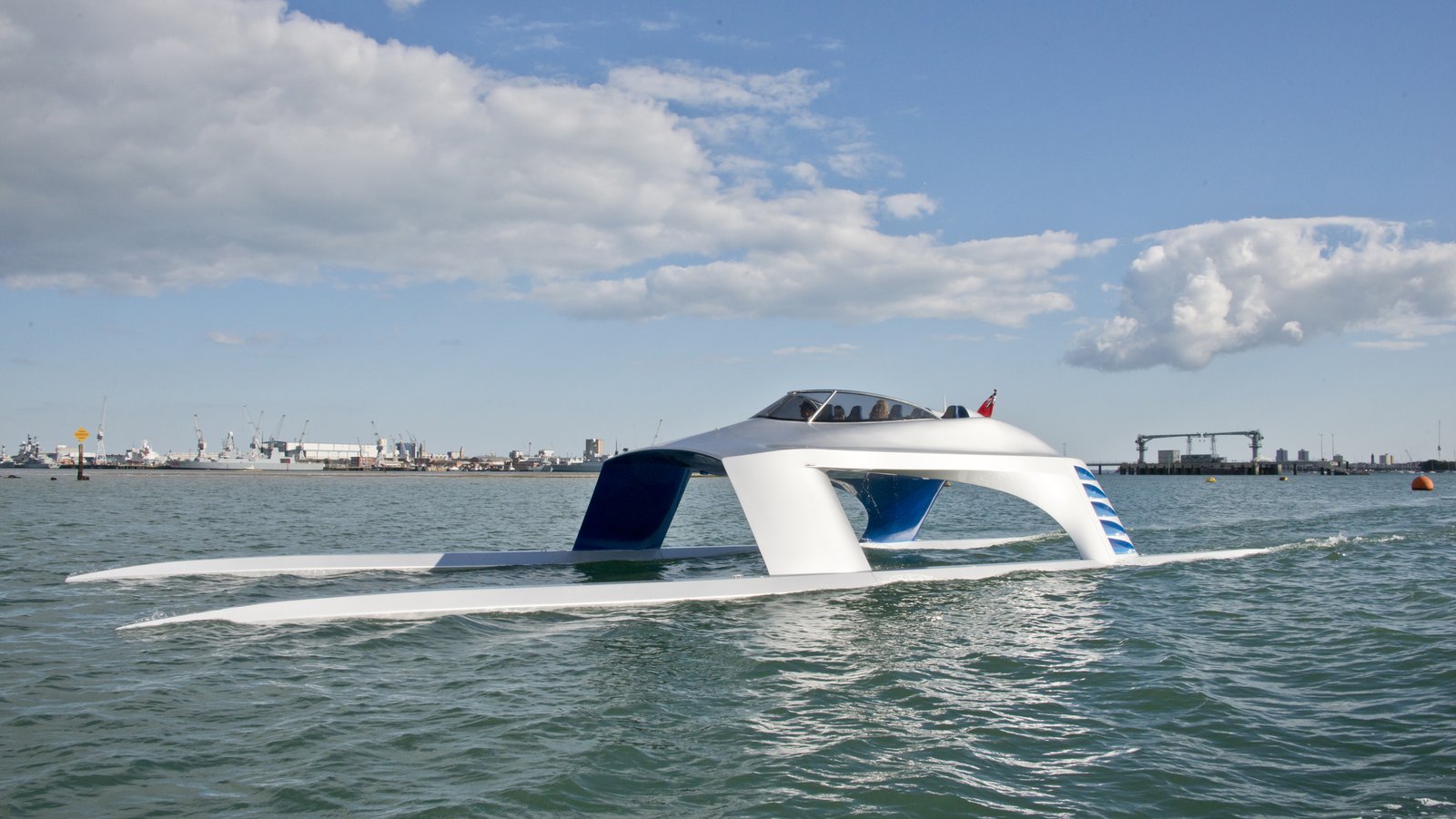Blog: Maritime Tech - Glider Yachts

There’s a popular view that the maritime sector is somehow stuck in its ways and resistant to change. But a quick look at some of the innovative and unique companies that make up the UK’s remarkably broad maritime sector would soon dispel that idea. During London Tech Week, Maritime UK spoke to companies that are leading the way with their high-tech research and development. In the second of a series of articles, we focus on Glider Yachts.
If you think you know what a yacht looks like, it’s time to think again. The futuristic Glider Super Sport 18 (SS18) was unveiled this month (June), and it’s like nothing you’ve seen before.
This 59-ft speedboat is the result of a decade of work by former superyacht captain Rob McCall, whose design was inspired after he was invited to pilot a high-speed, jet-propelled passenger catamaran in the Caribbean in 2007. “This catamaran had incredible seakeeping capabilities – combining speed with remarkable stability,” he says. “I decided to bring the design kicking and screaming into the 21st century.”
And so, the Glider concept was born – a high-tech gliding craft (a Glider) that owes a great deal of its ideas to the aviation industry and the world of Formula One. The first SS18 – named ‘M’, after McCall’s mother Margaret – was unveiled at the London On-Water Boat Show. Built by Burgess Marine in Southampton, it is powered by quadruple engines driving water jets with a total 1,200 horsepower. Above the two wave-piercing hulls, the 17-ft-wide cabin is fitted out to luxury standards, complete with a specially acoustically engineered audio system by J L Audio.
The helm is equipped with fully integrated navigational and control touchscreen displays provided by Garmin, better known for providing electronics for the private jet sector.
Rob McCall has aviation and F1 engineers on his team. He says: “The response and reception for this has been astonishing – we have 18 clients queuing up, from all over the world, including from Dubai. By the end of this year, we will have between 60 and 80 people employed, and another 60-80 indirectly – by mid next year, there will be around 300 people involved in the construction of the yachts.”
Each SS18 – prices start at US$1.3m) will take about eight months to produce. “It isn’t ‘built’ in the conventional sense – it is more high-precision assembly, similar to the way in which private jets or Rolls-Royce cars are made,” he says. “There is no waste and the process is highly efficient. If we were to receive any components that don’t meet rigorous quality checks, we would send them back. This is very high precision – we work to aviation standards.”
Glider Yachts is proud of being British-funded and British designed, he says – and it has a strong preference for working with British suppliers of the high-tech components and parts required.
The SS18, with a relatively shallow 1-ft draft, can reach 50 knots – and its stability control system is designed to ensure a smooth ride even at that speed. It has a 130 nm range, and increased tankage can increase that to 340 nm.
Unsurprisingly, Rob McCall says that conventional naval architects struggled to understand the Glider concept and how it works. “But hydrodynamicist experts get it straight away. It cuts through the water like a hot knife through butter.”
The first order is due for delivery by early in the second quarter of 2018 – and in parallel to the demand for the SS18, Glider Yachts is preparing to launch the Sports Xtra (SX18) turbine powered, with a 100-knot-plus top speed. Also on the way is the Sports Limousine (SL24), to be launched in Monaco next year. The SL24 is essentially a high-tech tender to transport people between superyacht and shore – it has also attracted interest for its potential as a chase boat and conventional tender, with interest from Dubai Road and Transport Authority (RTA) and several high-end island hotels/resorts.
As the for the first SS18, ‘M’, this will never be sold, says Rob McCall. “It will probably end up on loan to a maritime or science museum!”
